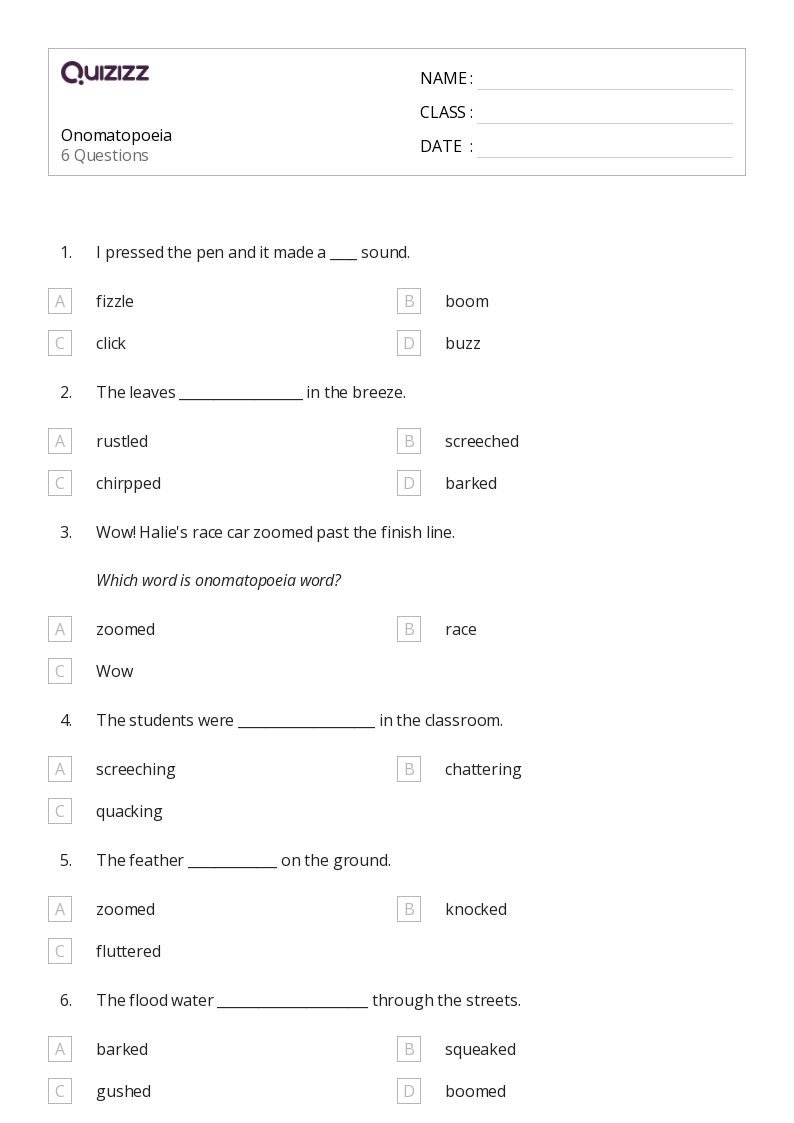
6 Q
2nd - 4th

10 Q
5th - 6th
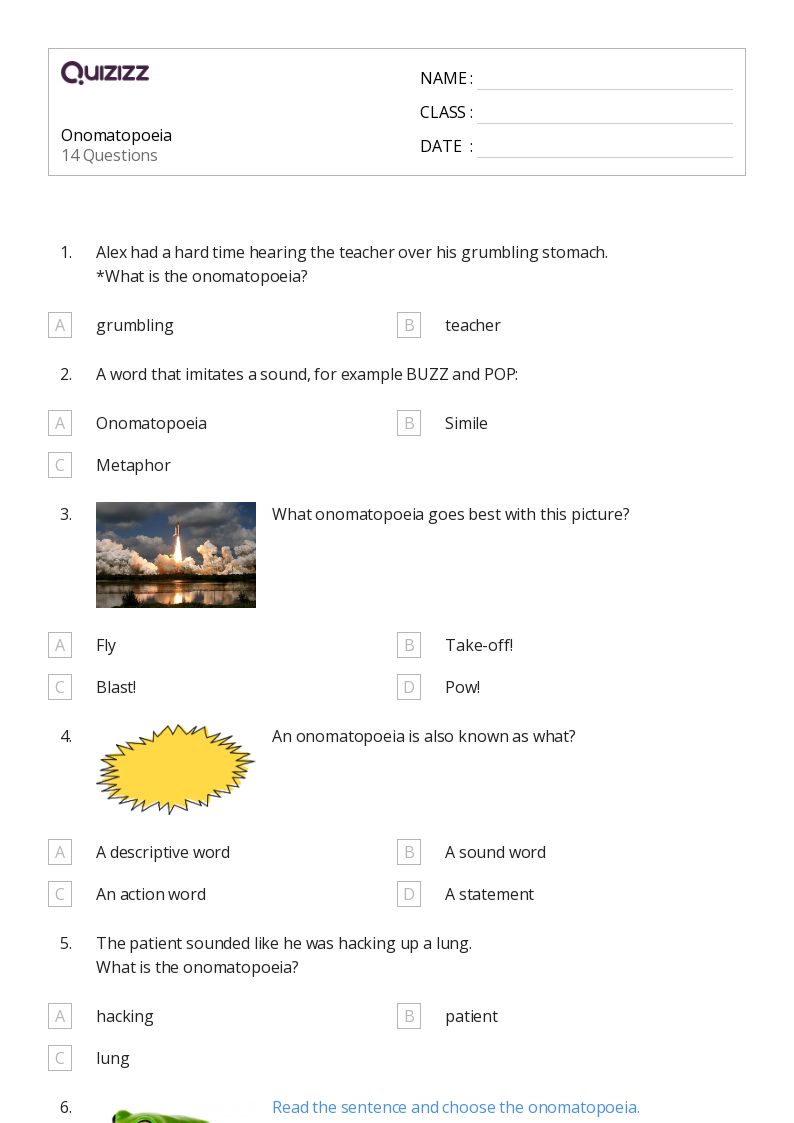
14 Q
4th - 7th
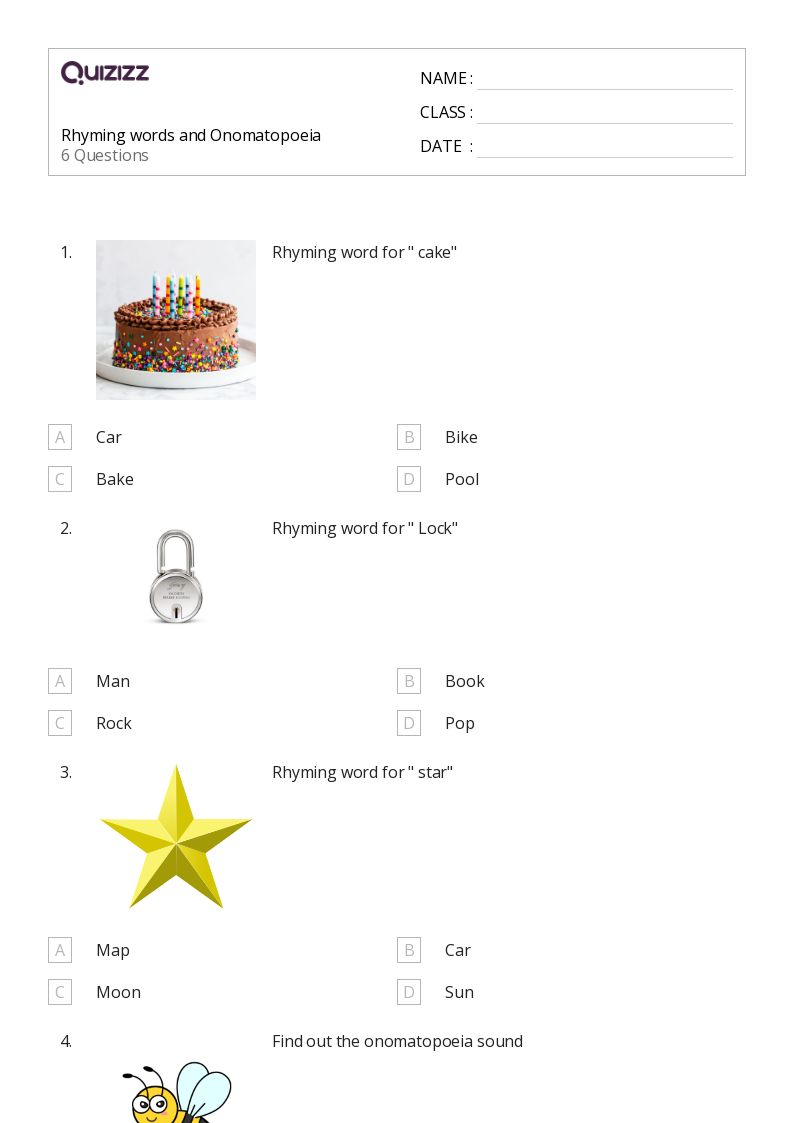
6 Q
1st
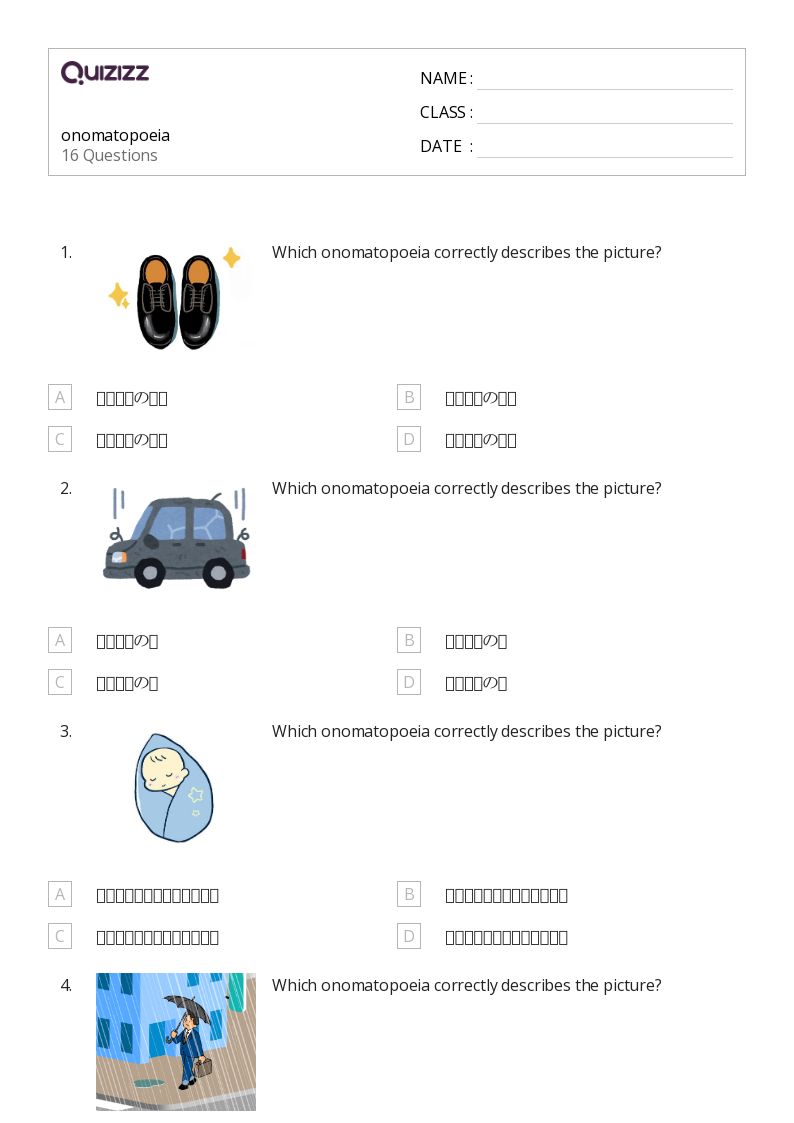
16 Q
2nd
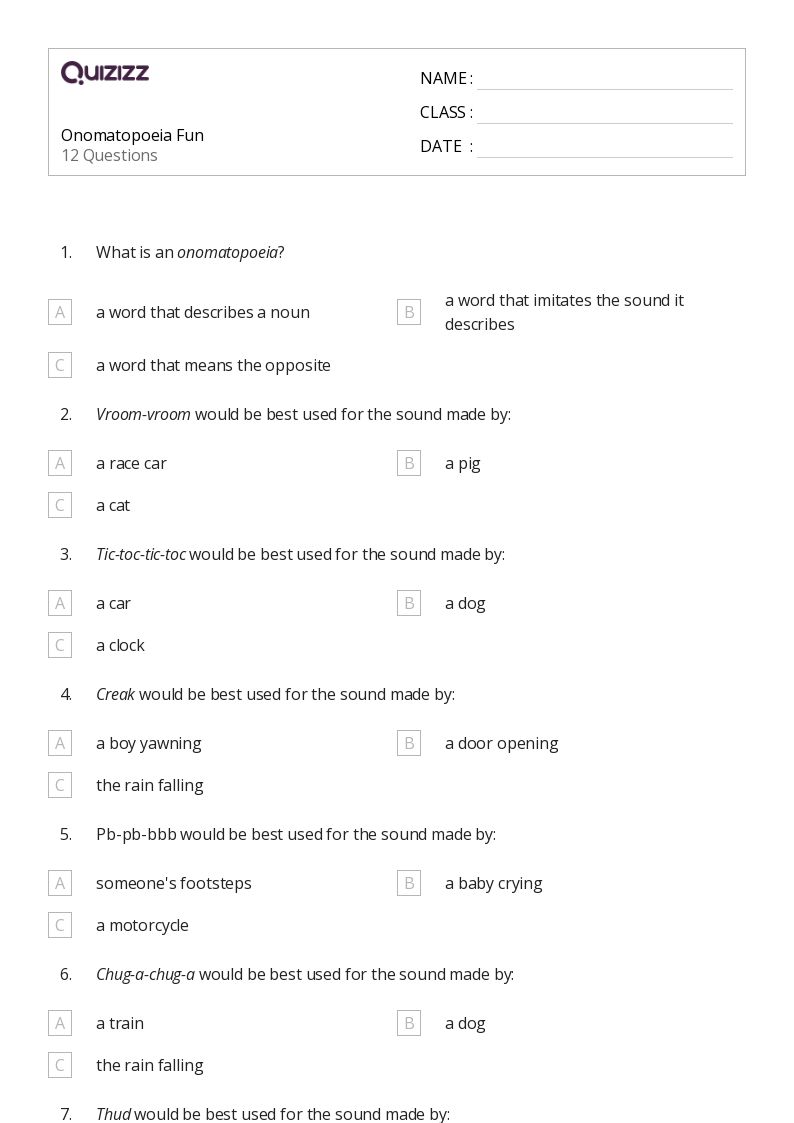
12 Q
2nd - 5th

11 Q
3rd - 6th
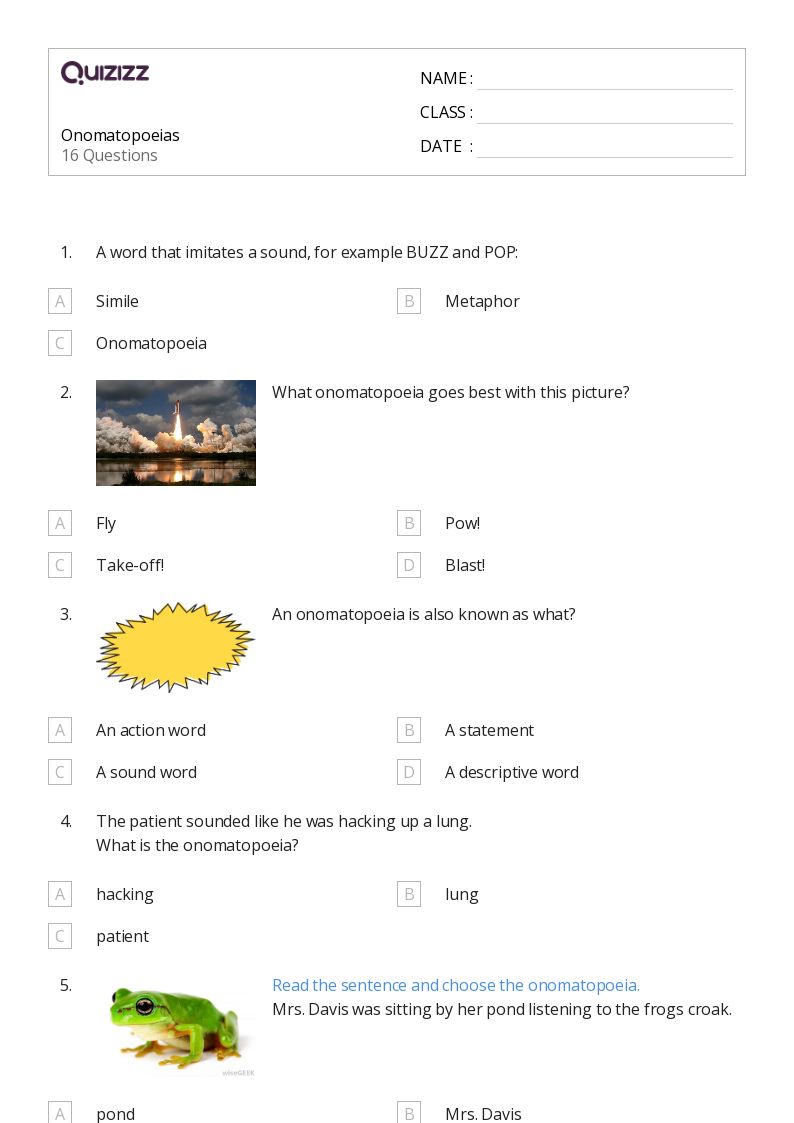
50 Q
5th - 6th
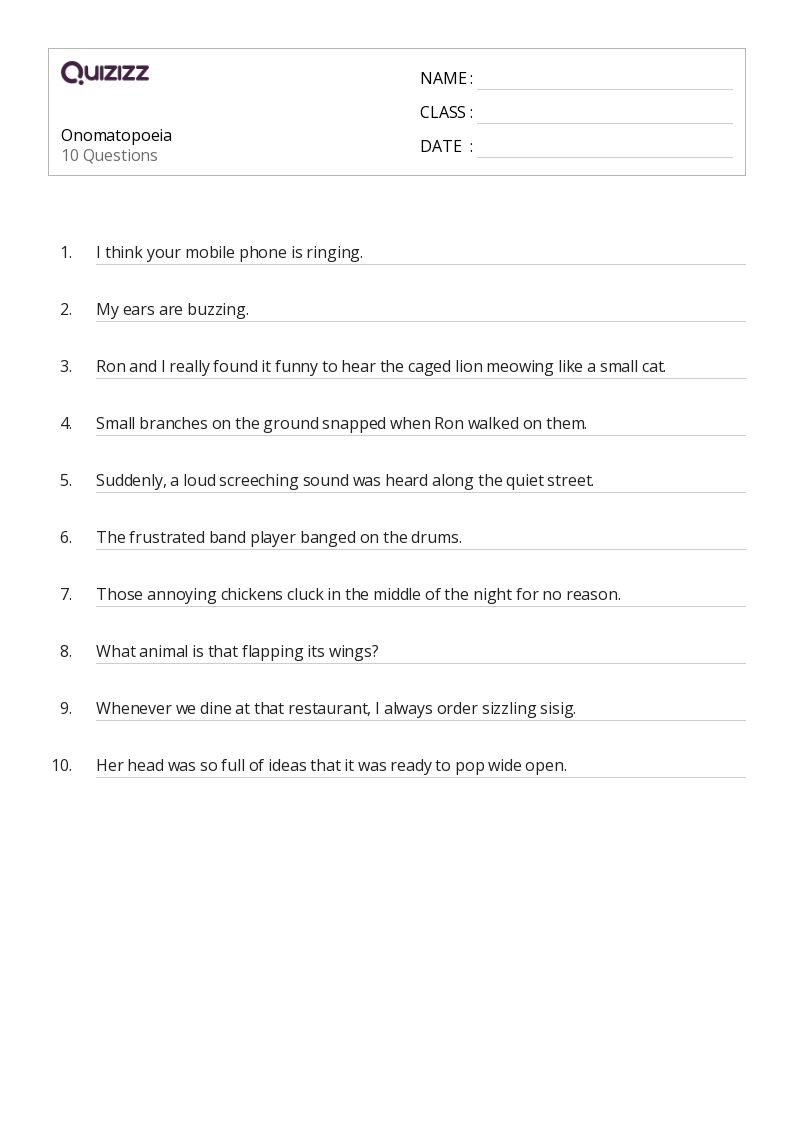
10 Q
5th

15 Q
7th - 9th

14 Q
4th - 7th

10 Q
7th

10 Q
5th - 7th
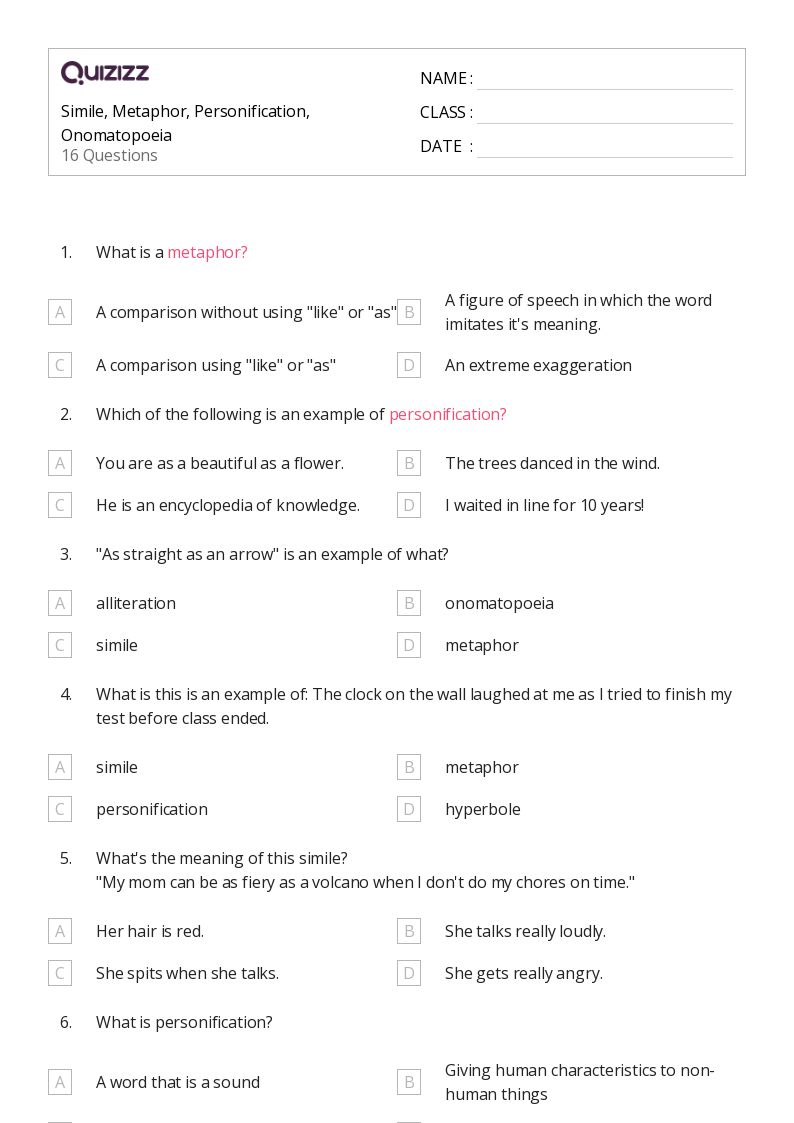
16 Q
3rd - 10th
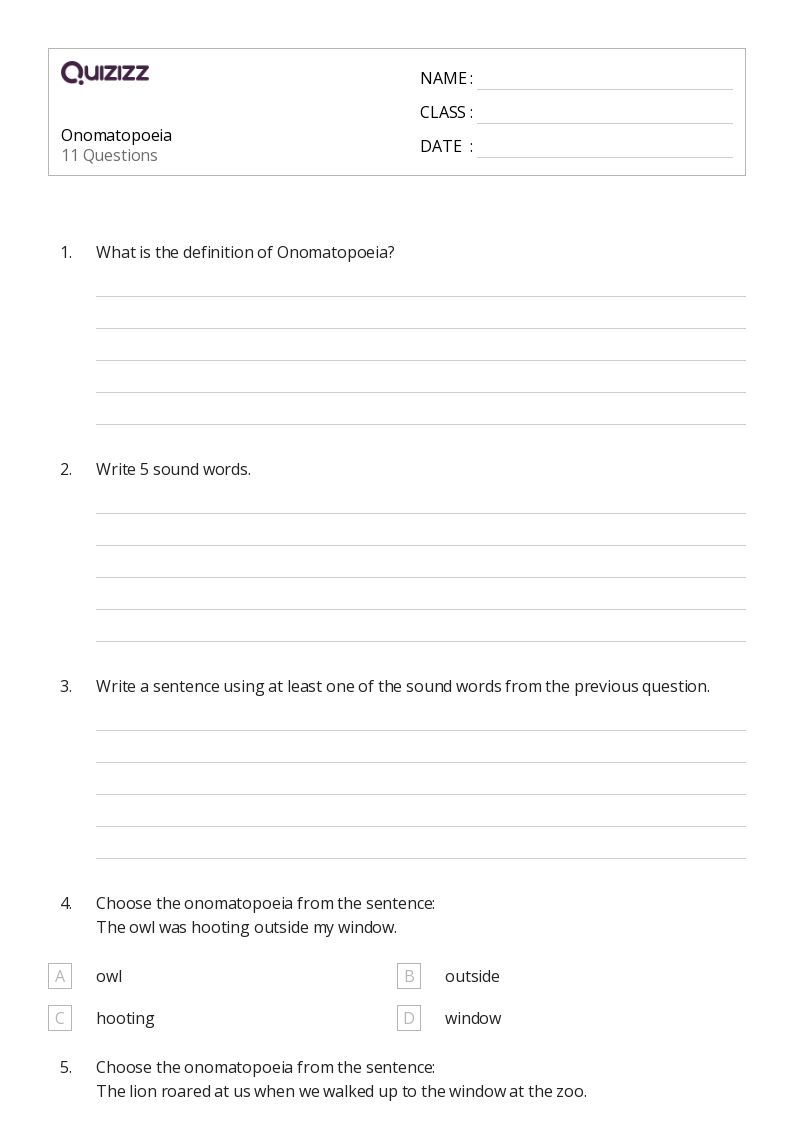
11 Q
3rd - 5th

8 Q
4th
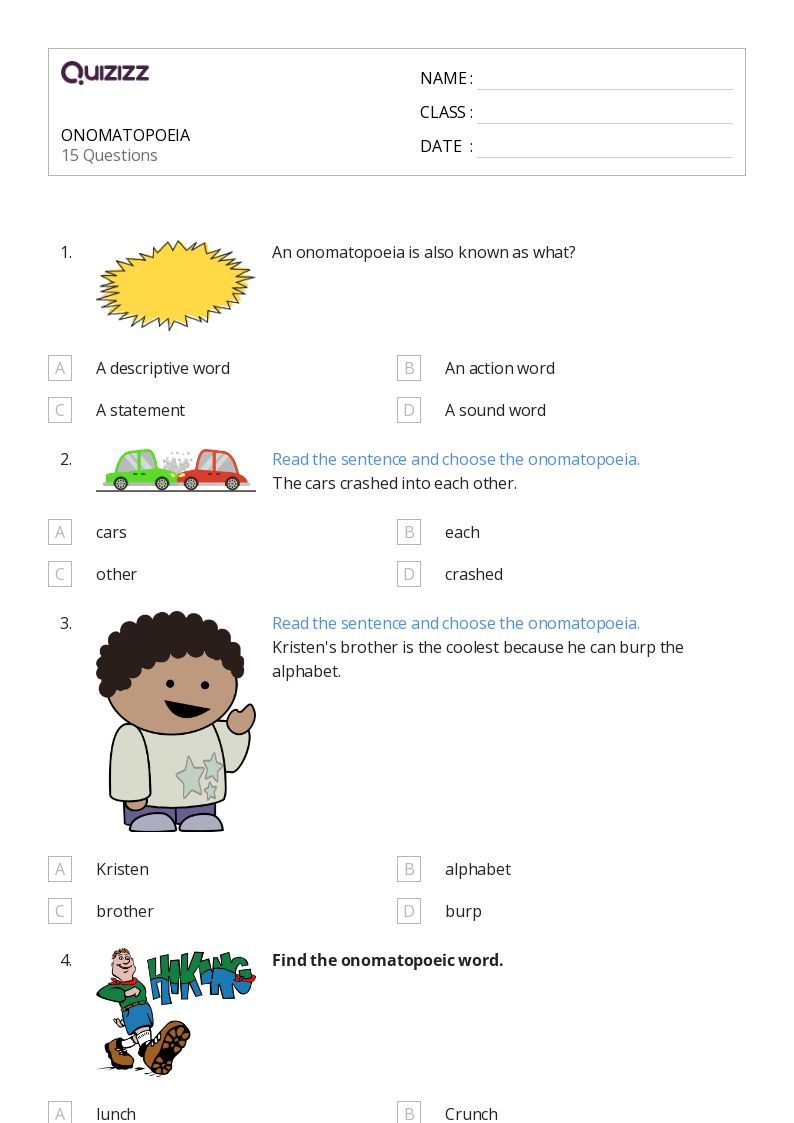
15 Q
4th
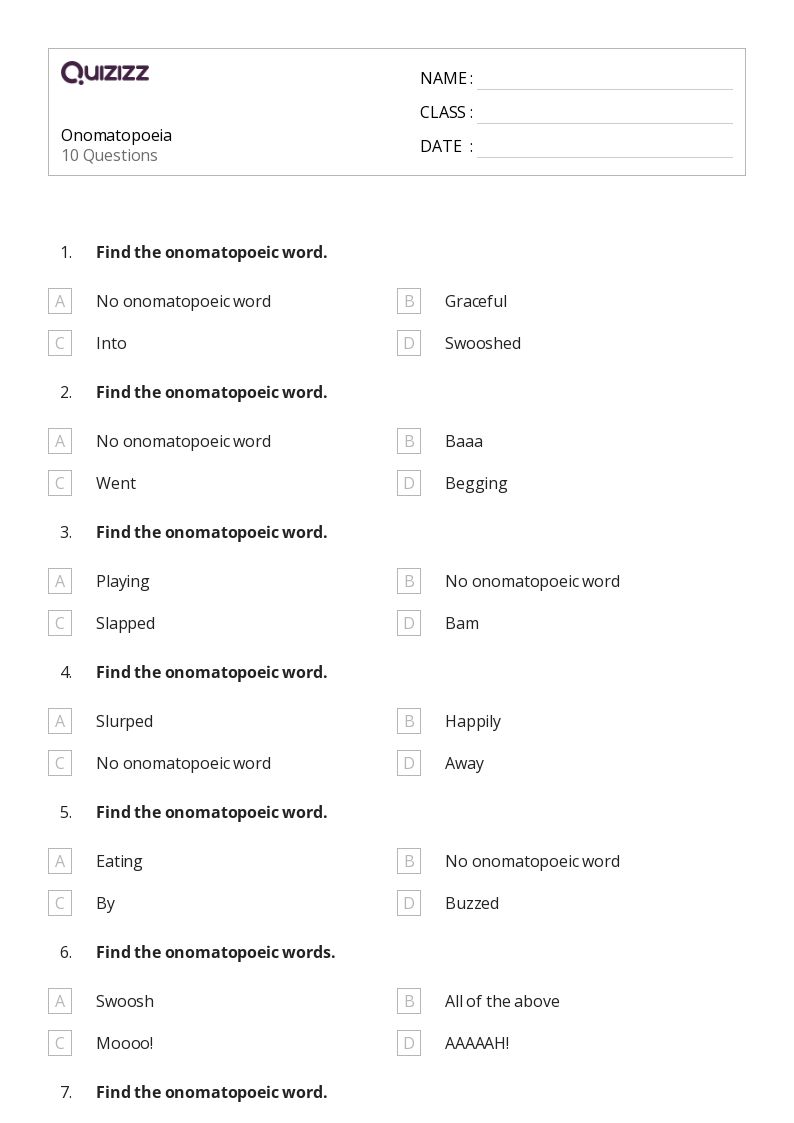
10 Q
2nd
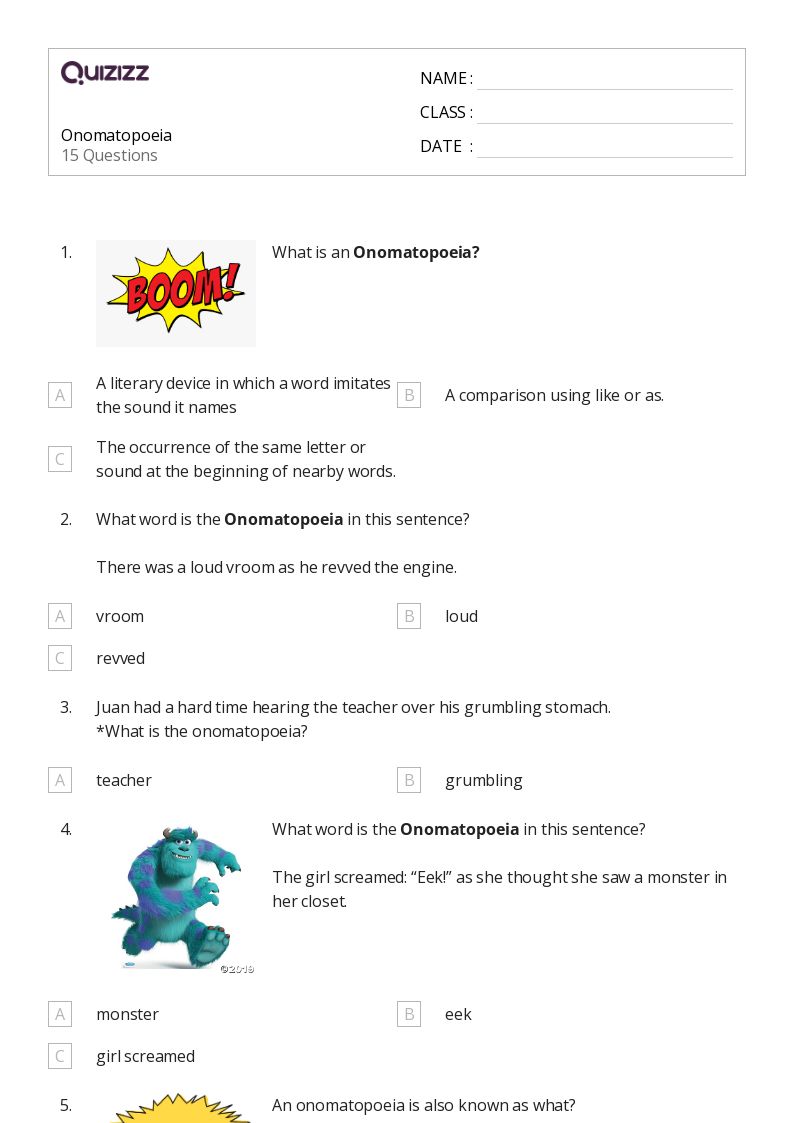
15 Q
6th - 8th

10 Q
1st

10 Q
5th - 6th
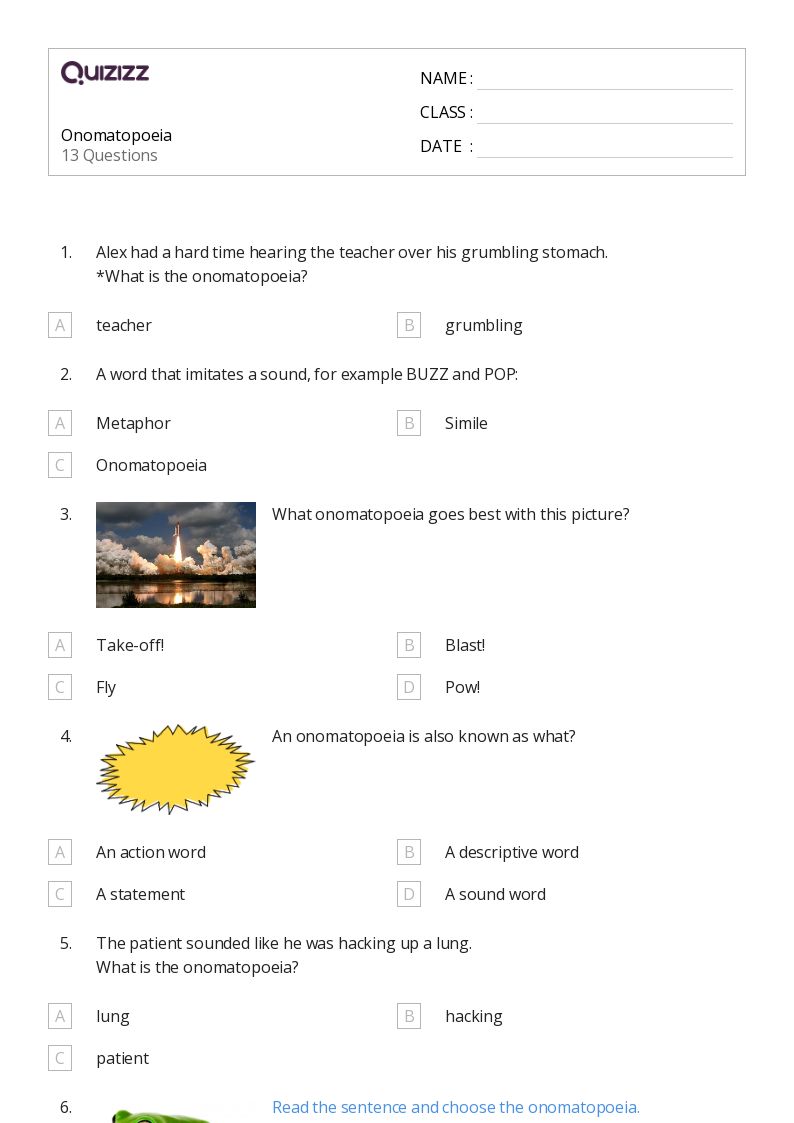
13 Q
6th - 8th
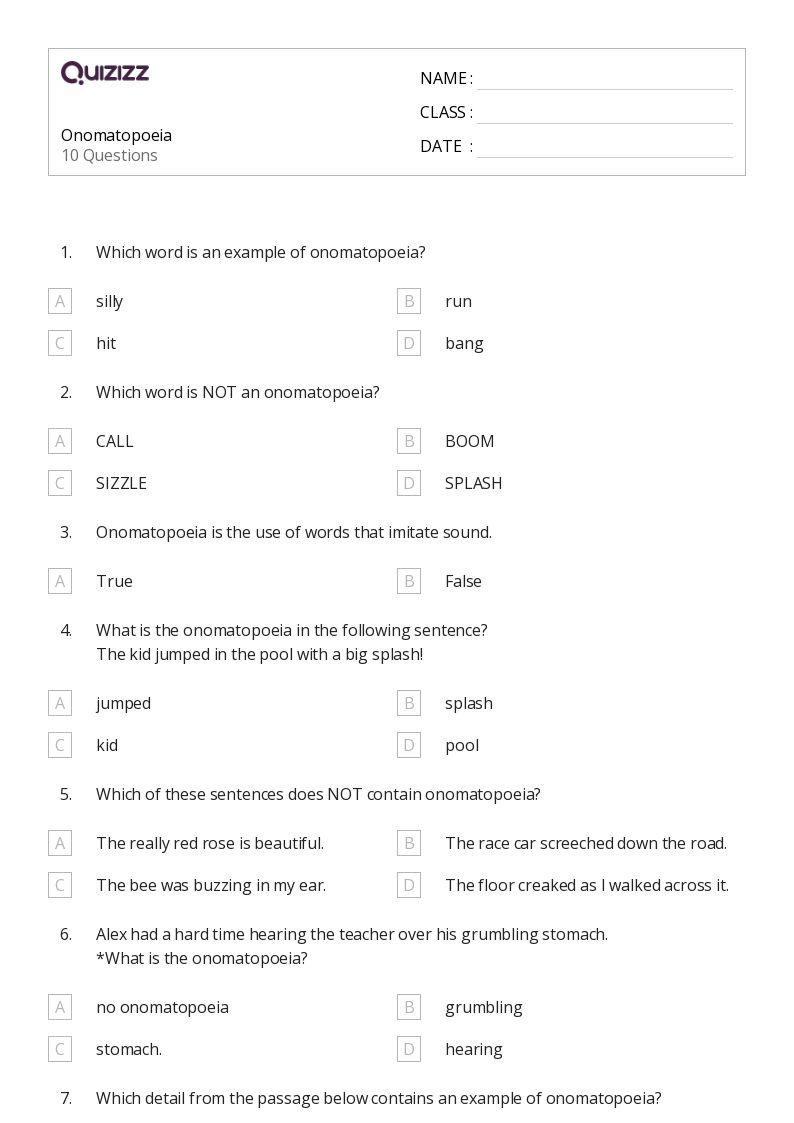
10 Q
3rd - 5th

15 Q
6th - 8th
Explore Worksheets by Subjects
Browse resources by Grade
Explore printable Onomatopoeia worksheets
Onomatopoeia worksheets are an engaging and interactive way for teachers to introduce the concept of figurative language to their students. These worksheets focus on the unique aspect of language that imitates natural sounds, making it a fun and memorable learning experience. By incorporating reading & writing exercises, grammar lessons, and language and vocabulary development, onomatopoeia worksheets offer a comprehensive approach to teaching this important aspect of language arts. Teachers can use these worksheets to create dynamic lesson plans that cater to different learning styles, ensuring that students grasp the concept of onomatopoeia and its role in figurative language. Furthermore, these worksheets can be easily adapted to suit various grade levels, making them a versatile resource for educators.
Quizizz is an innovative platform that offers a wide range of resources, including onomatopoeia worksheets, to help teachers create engaging and interactive lessons for their students. With its focus on reading & writing, grammar, language and vocabulary, and figurative language, Quizizz provides a comprehensive suite of tools that cater to different aspects of language arts education. Teachers can easily create customized quizzes and games that target specific grade levels and learning objectives, making it an invaluable resource for educators looking to enhance their lesson plans. In addition to onomatopoeia worksheets, Quizizz offers a variety of other resources that support language arts education, ensuring that teachers have access to a diverse range of materials that cater to their students' unique needs and learning styles.
